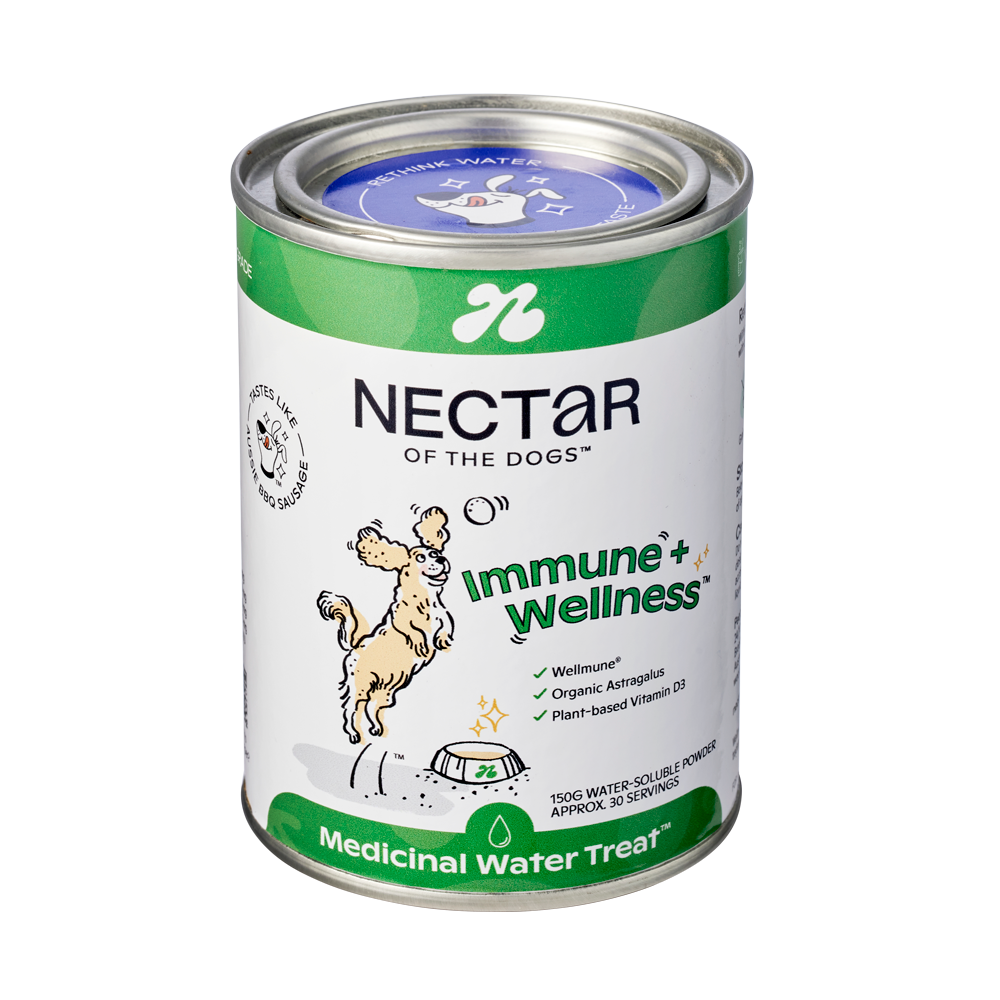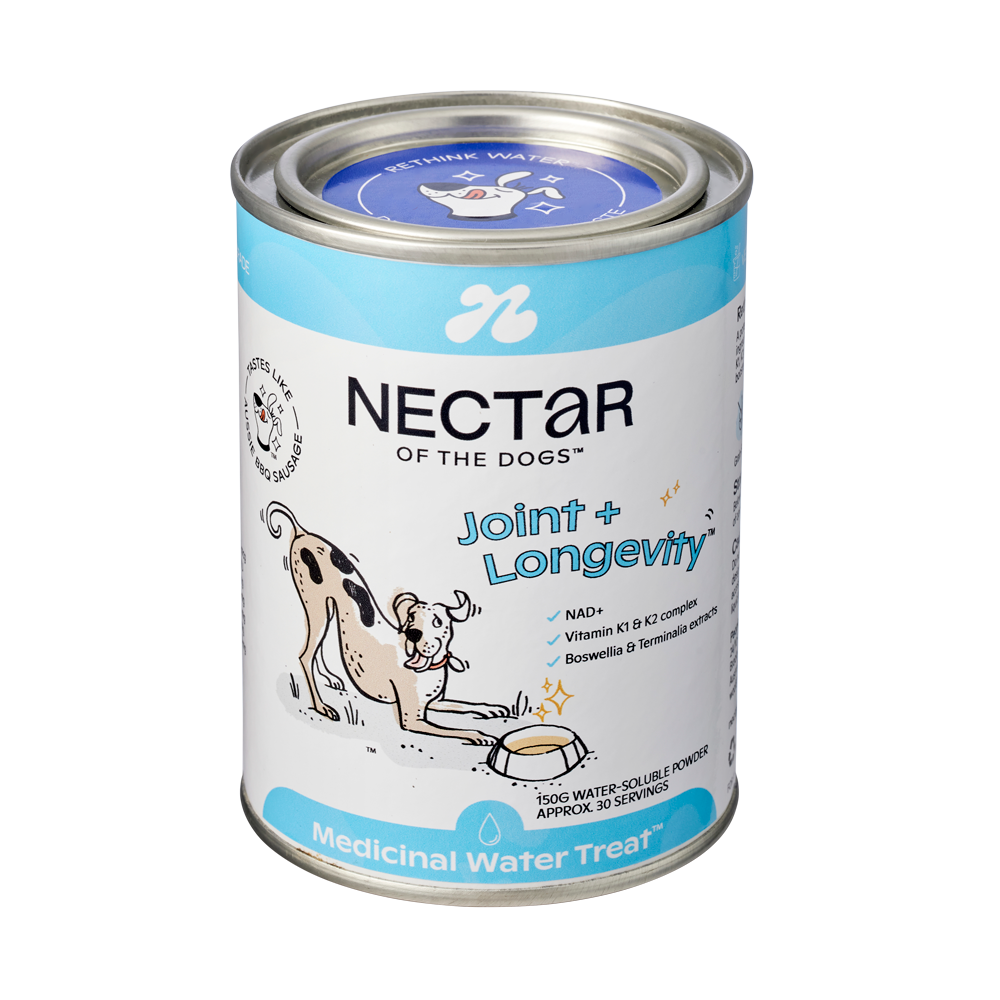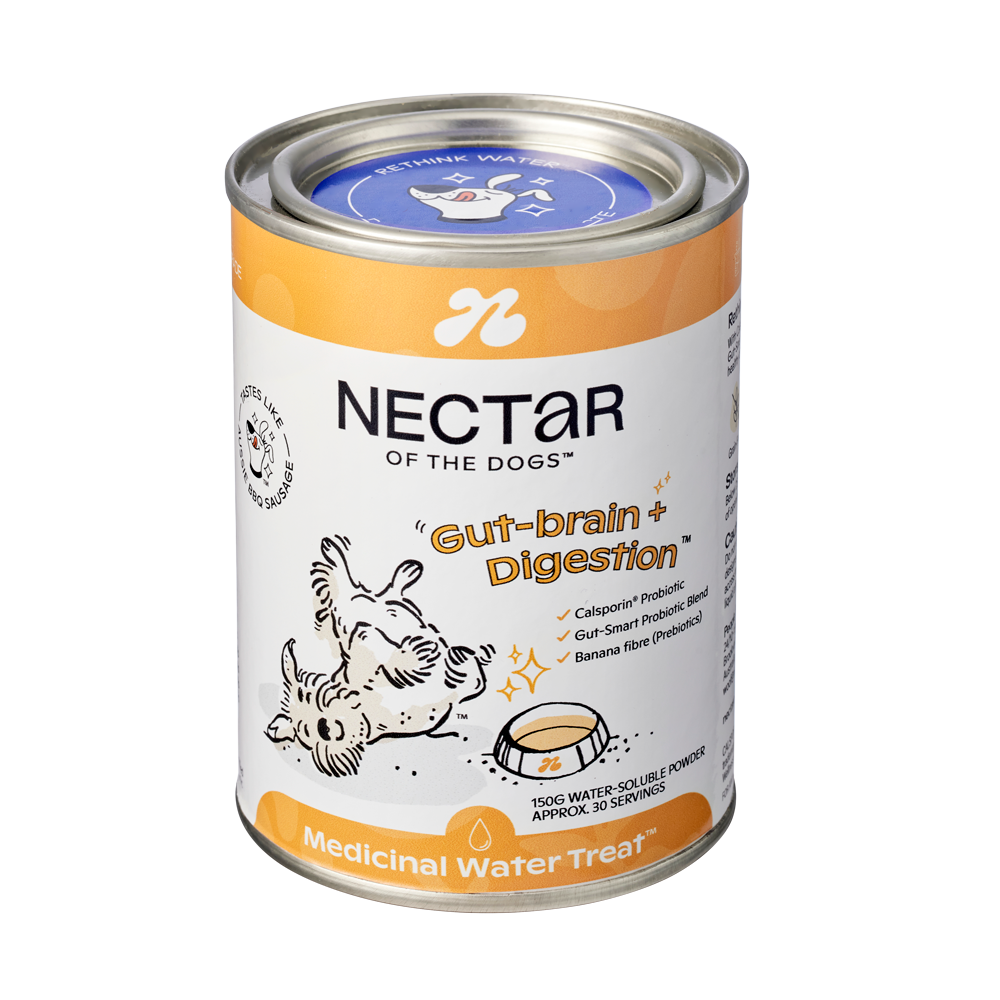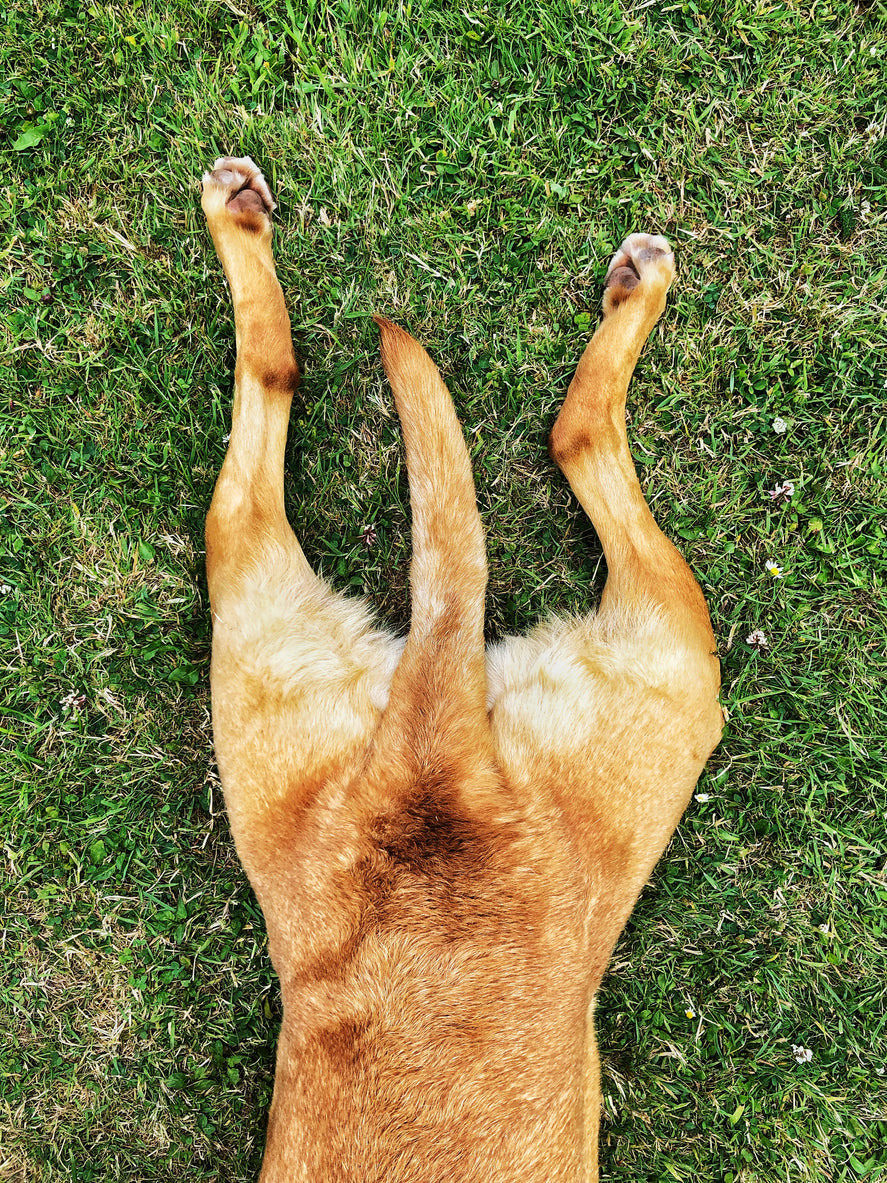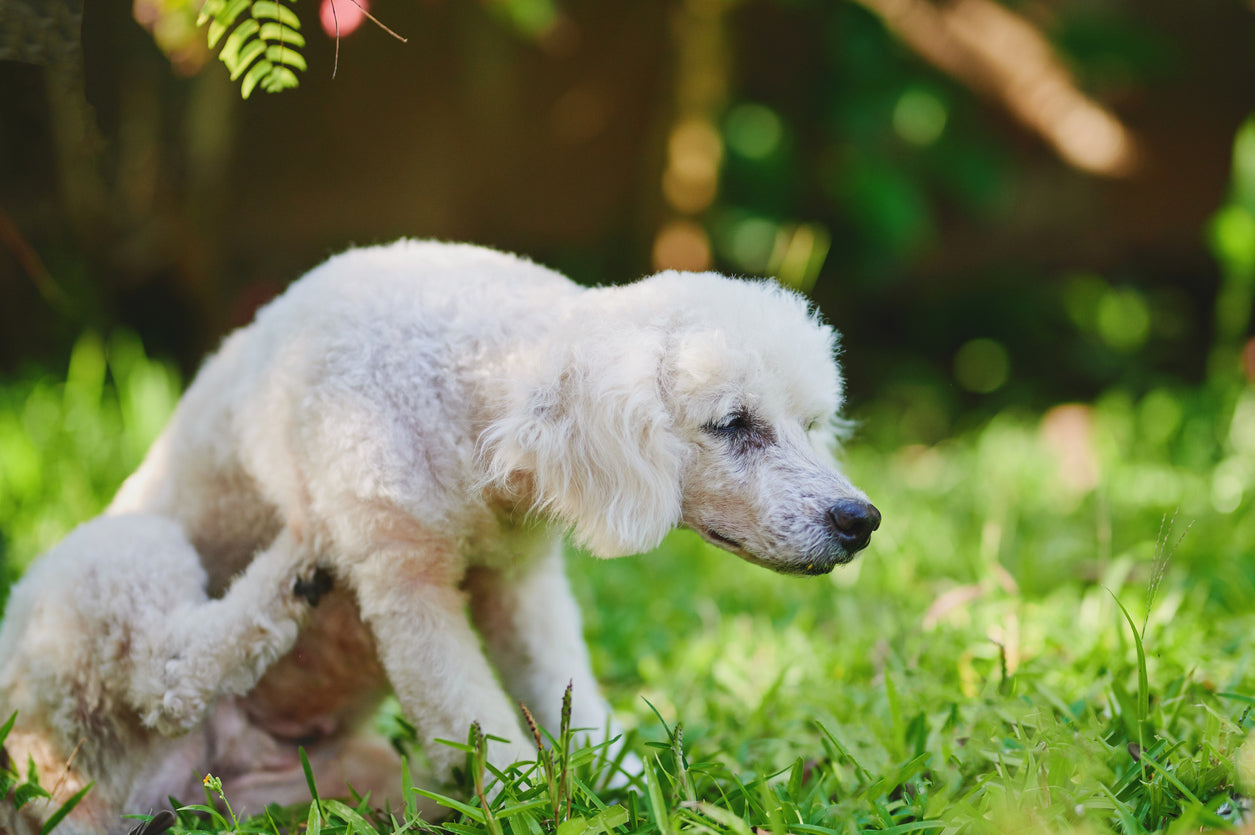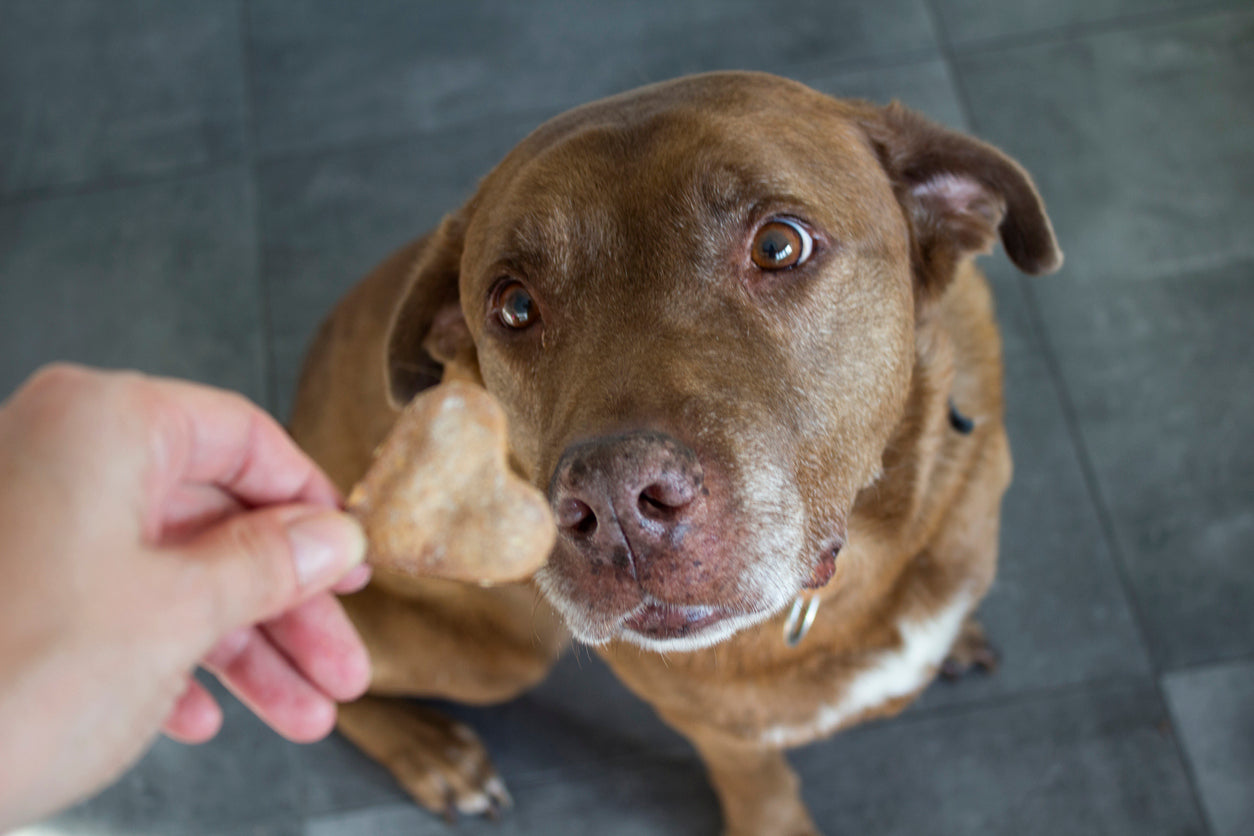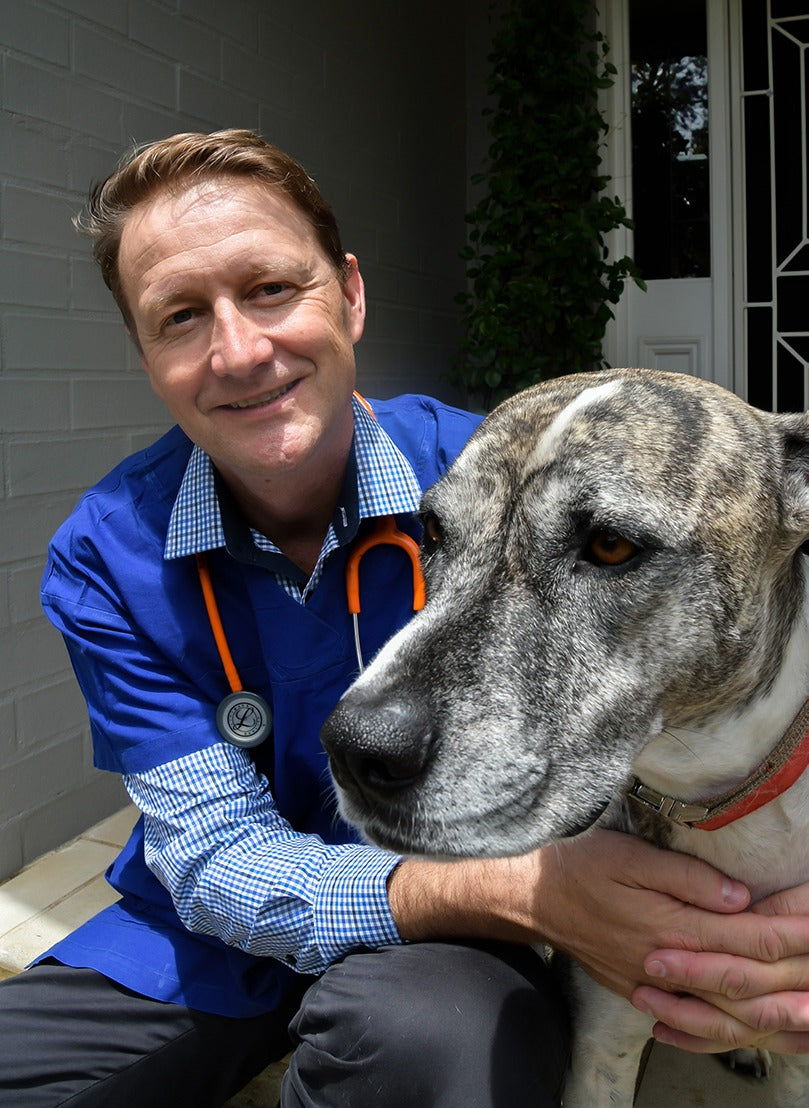Hip Dysplasia - Symptoms and Treatment Options for Dogs
Hip dysplasia is a painful, progressive condition commonly seen in large and giant breeds but which can also affect medium breeds and more rarely small breed dogs. Hip dysplasia happens because the head of the femur bone and the hip socket do not fit or develop properly which causes some grinding and cartilage deterioration.
Hip dysplasia is not Osteoarthritis but can often lead to it negatively affecting a dog’s quality of life. It can cause stiffness, limping, and arthritis.
Fortunately, there are ways to diagnose and manage hip dysplasia to help your pup regain their mobility and reduce their discomfort. Supplements can help ease the symptoms of hip dysplasia, but depending on the severity other measures may be necessary.

What is Hip Dysplasia?
Hip dysplasia is an inherited condition that occurs when the ball and socket joint at the hip do not fit properly, causing painful wear-and-tear on the joint. This can lead to discomfort when walking and running, inflammation even when lying down, and in many cases osteoarthritis.
It is most commonly found in larger breeds such as Labradors, Rottweilers, Saint Bernards, Golden Retrievers and German Shepherds, who have joints that have to hold more weight and pressure on them. Smaller overweight dogs also tend to suffer more frequently with hip dysplasia for the same reason.
Additional factors like heredity / genetics, nutrition as a puppy and excessive growth rate, the amount and types of exercise, and of course obesity can also increase the chances of developing hip dysplasia.
If left untreated, hip dysplasia can cause mobility issues and severe pain for your dog.
Symptoms of Hip Dysplasia in Dogs
The most common symptoms of hip dysplasia in dogs are:
- Stiffness
- Decreased range of motion
- Limping and lameness in the hind legs
- Discomfort lying down
- Swelling around the hips
- Discomfort when being touched on the hip joints
- “Bunny Hopping” gait
- Sitting or standing with a “hint”—a hunched posture that looks uncomfortable and indicates pain in the hip joints.
It is important to consult a veterinarian if your dog shows any of these signs, as early diagnosis is key for treating hip dysplasia effectively.
Diagnosis, prevention and Treatment Options
Diagnosis of hip dysplasia will usually require X-rays and a full physical exam. Let your regular veterinarian know straight away if you notice any signs of joint pain or discomfort from your dog. They will most likely manipulate your dog’s hind legs to detect any mobility issues or pain and may also recommend doing some blood work to detect any specific inflammation so that a diagnosis can be made.
Treatment options vary depending on the severity of the condition from lifestyle changes to surgical intervention. Diet changes, weight reduction, alternative therapies (acupuncture, TCM, laser, stem-cell) can be of help if the condition is not too severe.
Natural anti-inflammatory ingredients like the ones in Nectar Joint + Longevity may be helpful to reduce the pain associated with the condition or anti-inflammatory medications (NSAIDS or corticosteroids), but be mindful of possible long term side effects of the latter. In the more severe cases and depending on your dog’s age and condition, surgical intervention may be a good option.
Prevention Measures to Consider
Hip dysplasia cannot be prevented in all cases, however there are a few steps you can take to help reduce the risks of developing the condition. Consider appropriate nutrition as a puppy to prevent excessive growth and to allow the joints to develop properly without putting too much strain on them.
If you are getting your puppy from a breeder, it is also recommended that you ask for their parent’s history to flag possible hereditary signs of hip dysplasia. Weight control and a complete and balanced diet are also critical to ensure the joints are not under too much stress.
Keeping your dog slim but not too thin can help reduce the risk of developing hip dysplasia, so it’s important to weigh your dog regularly at home or at the vets. You might not notice their weight creep up, so it’s good to keep weighing them to ensure you keep them healthy.
Regular, low-impact exercise such as walking (ideally not on hard surfaces) and swimming can be beneficial for dogs as it’s important to keep them moving in a way that doesn’t hurt their joints. Swimming in the ocean is ideal for dogs prone to or suffering from hip dysplasia, as the salt water keeps them buoyant and they can enjoy a good workout without impacting the joint sockets at their hips.
